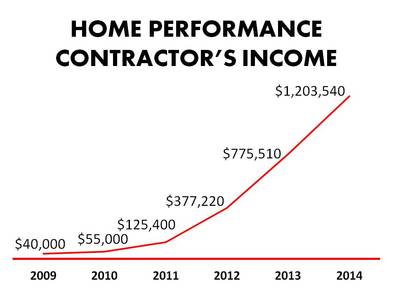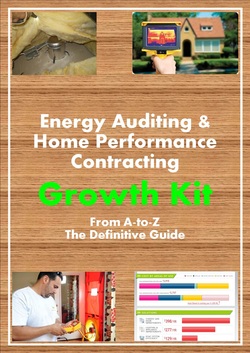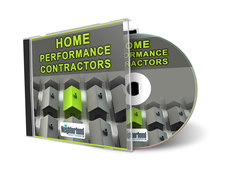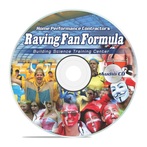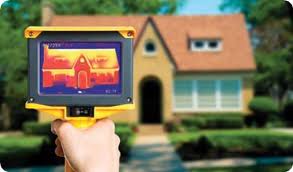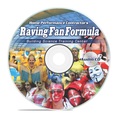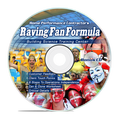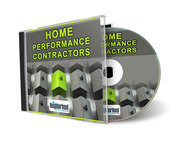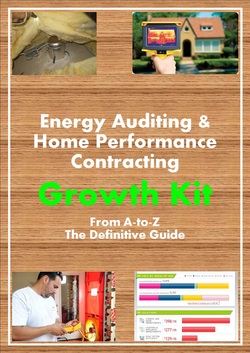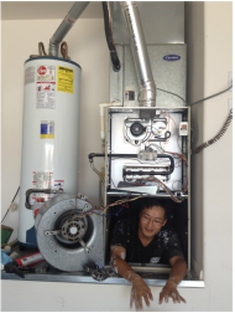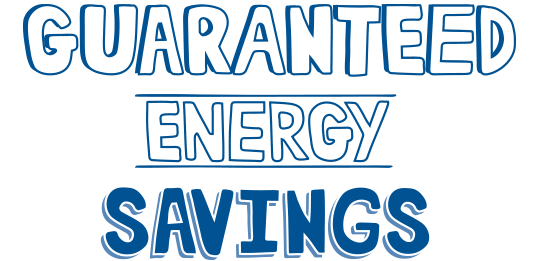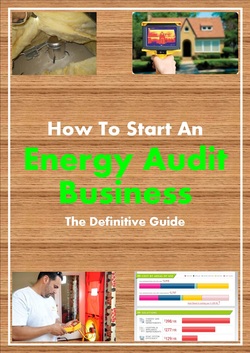Energy Auditors & Home Performance Contractors
Looking For That Silver Bullet To Rocket Launch Your Business?
DON'T GO BACK TO WHAT YOU USED TO DO, LEARN HOW TO THRIVE
IN HOME PERFORMANCE. WE'LL SHOW YOU HOW.
TO BE A SUCCESSFUL INDEPENDENT ENERGY AUDITOR & HOME PERFORMANCE CONTRACTOR,
YOU HAVE TO MASTER MORE SKILLS THAN YOU EVER ANTICIPATED:

Assuming you have networked enough or figured out the marketing to survive the first two years as an energy auditor or home performance contractor. At some point there comes a time when you realize your income is capped because you can't personally put in any more time into your business. At that point you can either stay small, essentially working for the business, or you can choose financial and time independence and start to grow your company.
To do so you'll need managerial, leadership, human resources and entrepreneurial skills in no small amount. Sure with enough time you could figure many of these things out on your own - but you live in the real world where your competition and your potential customers won't wait. If only you had a shortcut to learn from the successes and failures of other energy auditors and home performance contractors.
To do so you'll need managerial, leadership, human resources and entrepreneurial skills in no small amount. Sure with enough time you could figure many of these things out on your own - but you live in the real world where your competition and your potential customers won't wait. If only you had a shortcut to learn from the successes and failures of other energy auditors and home performance contractors.
FINANCIAL FREEDOM, TIME FREEDOM, ALL WITHIN A YEAR IN HOME PERFORMANCE.
|
None of us go into this business wanting to be tied down and feel trapped by our own making and yet that's exactly what happens to unsuspecting business owners who are ill prepared to face all the challenges of running your own company. Unfortunately, success doesn't come by just performing the best energy audits or doing the highest quality install. Many auditors and home performance contractors find the stress of juggling ten aspects of business simply too much to handle and move back to what ever it was they did before. The sad fact is, owning a home performance company doesn't have to be grueling, just look at me. I'm my own success story and I don't have a business degree or even a contracting background.
|
INTRODUCING THE
|
The home performance survival guide is the most comprehensive resource you'll find for this stage in your business. It covers every aspect of your home performance business: how to use rank in on the first page of Google search, how to get your first leads, where to find the best deals on blower doors and IR cameras and how to hire your first employees.
Each lesson covered in the book is drawn from actual experiences of my journey to a seven figure home performance business. Some of them have been successful, some not so successful, but there are in there for you to learn from. My skills and knowledge are all included with action plans and worksheets that you can put to use right away.
HERE'S JUST A SAMPLING OF WHAT YOU'LL GET:
AND THAT'S JUST A FRACTION OF THE CONTENT. TO GET A BETTER APPRECIATION FOR WHAT'S INSIDE, LET'S LOOK AT EVERYTHING THE HOME PERFORMANCE GROWTH KIT OFFERS.
|
HERE'S WHAT YOU GET - YOUR ROADMAP OF AMAZING RESOURCES
|
WHEN YOU PURCHASE THE HOME PERFORMANCE GROWTH KIT, YOU'LL GET LIFE TIME ACCESS TO A VIRTUAL LIBRARY OF RESOURCES THAT WILL HELP YOU TAKE YOUR HOME PERFORMANCE BUSINESS TO THE NEXT LEVEL, INCLUDING:
Raving Fan Formula Program
|
A SPECIAL NOTEFROM BPI EXAM ACADEMY FOUNDER, DAVID BYRNES |
Hello there! I'm David Byrnes, founder of BPI Exam Academy. Like you, I'm an energy auditor and home performance contractor who knows just how challenging, but also rewarding it is to build your own business from scratch. It's demanding work, but I love it. That's why I created this program, to help deserving home performance contractors reach financial and operations success.
I know first hand that journey can be a nerve racking, stressful and solitary. I first started my home performance business with $3,000 in credit card debt, no clients and no experience. Through hard work and constantly working outside my comfort zone I've built my home performance business to over seven figures after five short years. Over the years I've learned how to market my business and operate it smoothly to bring in more profits and free up more of my time to spend with my family. The Home Performance Growth Kit is my way to offer that experience to an amazing breed of entrepreneur - home performance professionals like you. This is the guide I wish I had when starting my energy audit company. It's the most complete program you'll find and I'm excited for you to try it! |
This is the lowest cost the program will ever be. I'm currently developing each of the programs to be used and sold by itself but you have a chance to get exclusive lifetime access to all three programs with lifetime access to all their updates for a fraction of the price. All prices are final and when they are raised, a previous lower price will not be honored.
$397 BUY IT NOW |
OUR GUARENTEEI know you are asked to give energy savings guarantees from customers, well this is our guarantee for you, the hard-working energy auditor and home performance contractor. Our program has been so successful and repeatable even our admin staff can run campaigns on autopilot and bring in high quality leads. If you go through the program and complete the templates we guarantee your satisfaction. However if you complete the worksheets and find your phone hasn't been ringing, just send us your work as proof you tried and we will refund your money, simple as that.
|
START GETTING LEADS & SALES
with the Home Performance Growth Kit today.
with the Home Performance Growth Kit today.
now you can have a $3,249 program at only a fraction of the cost
|
|
Don't Have Your Blower Door Yet?IF YOU DON'T HAVE YOUR ENERGY AUDIT COMPANY SET UP YET, WE RECOMMEND THAT YOU READ OUR OTHER BOOK FIRST.
|
